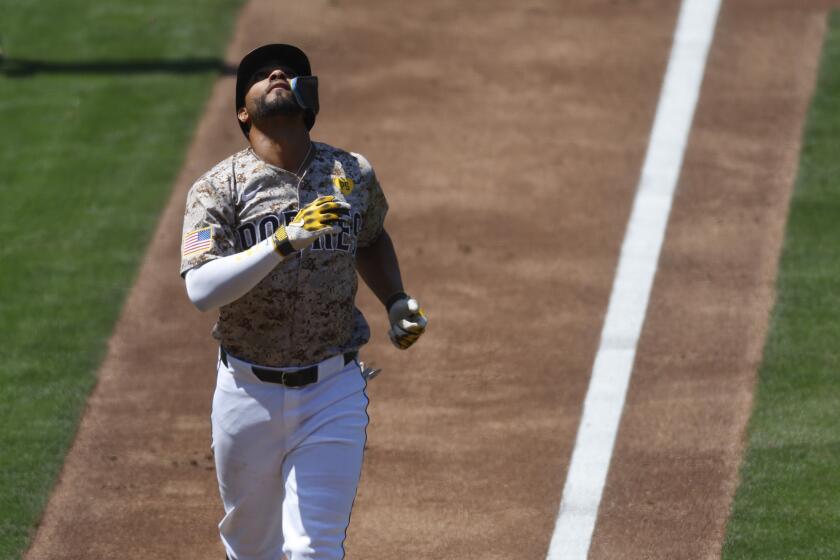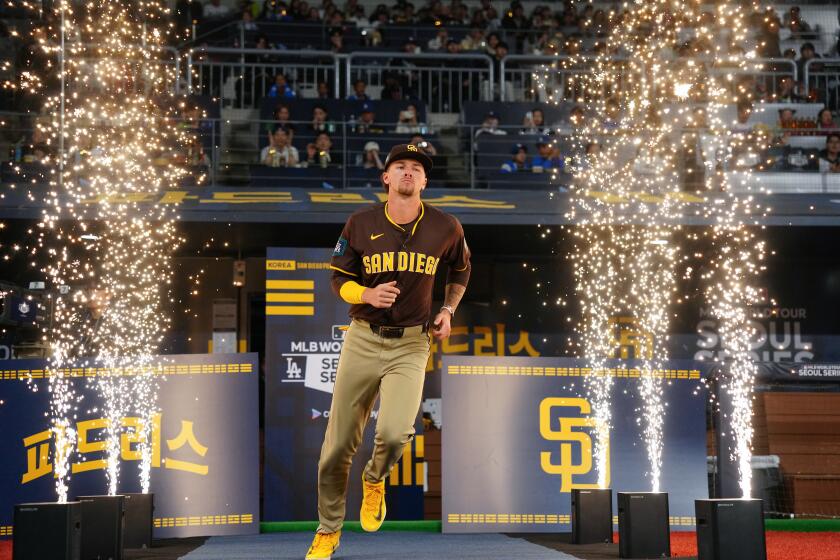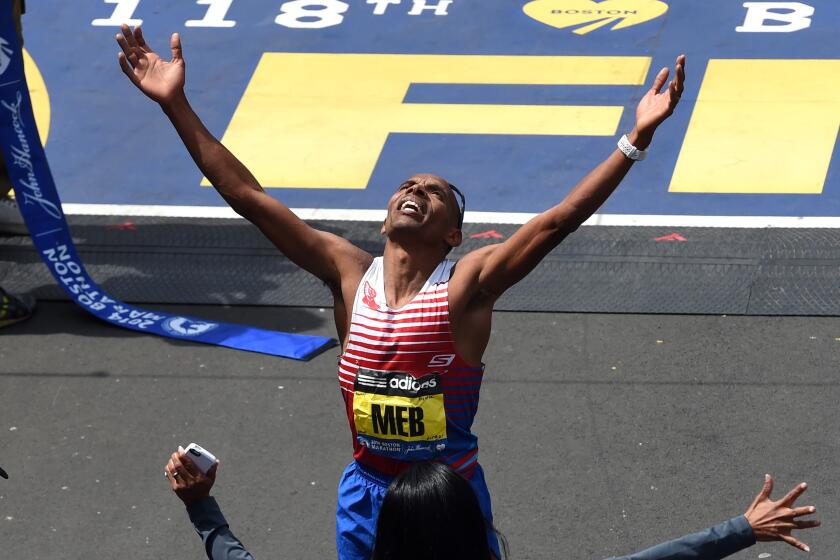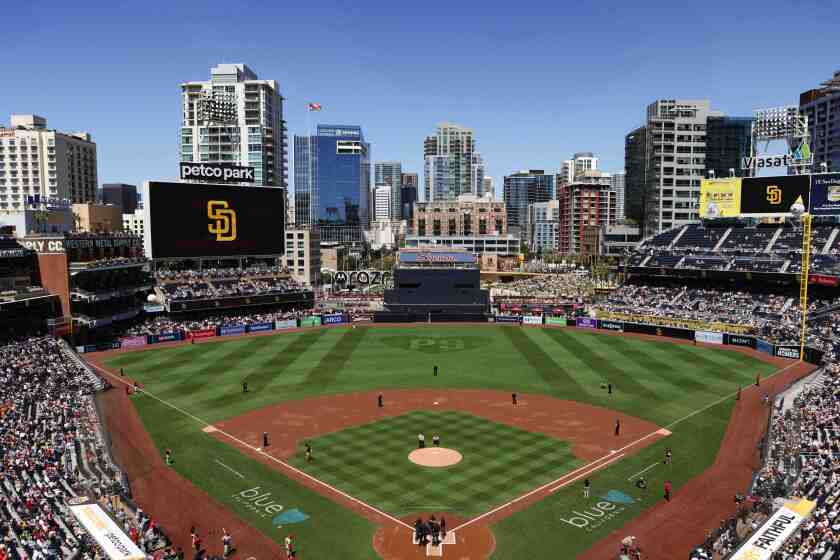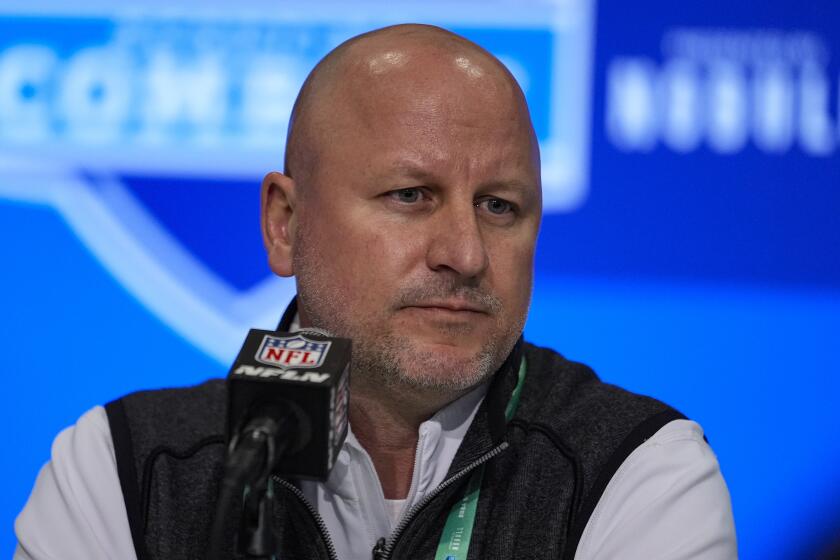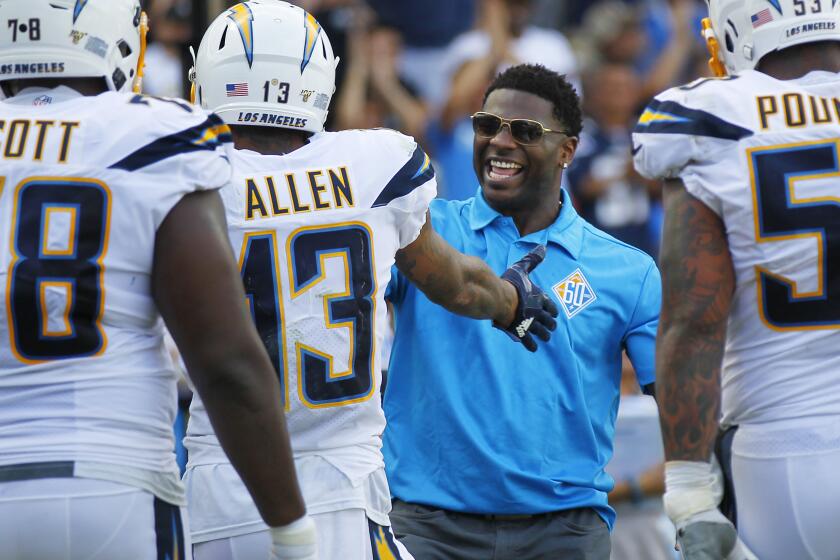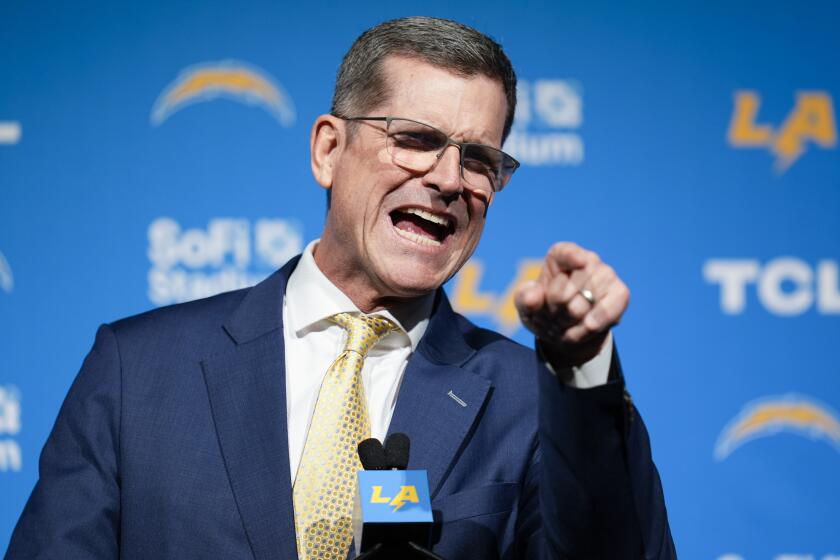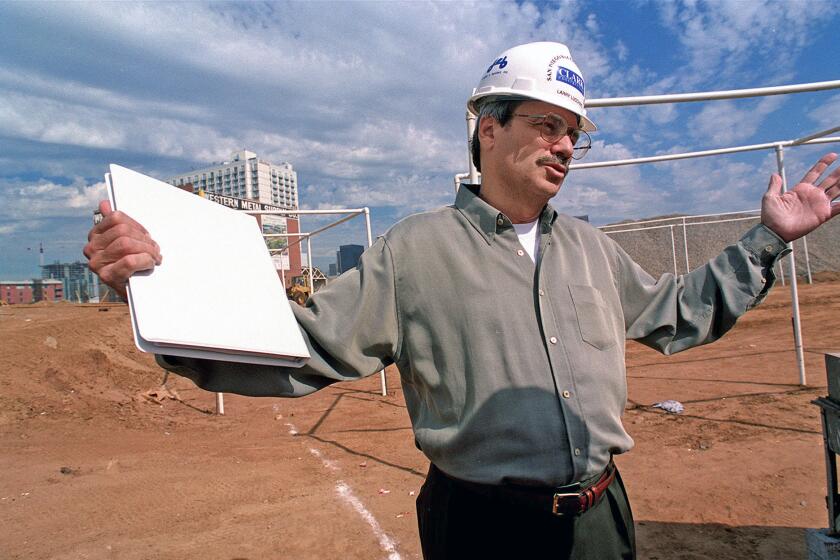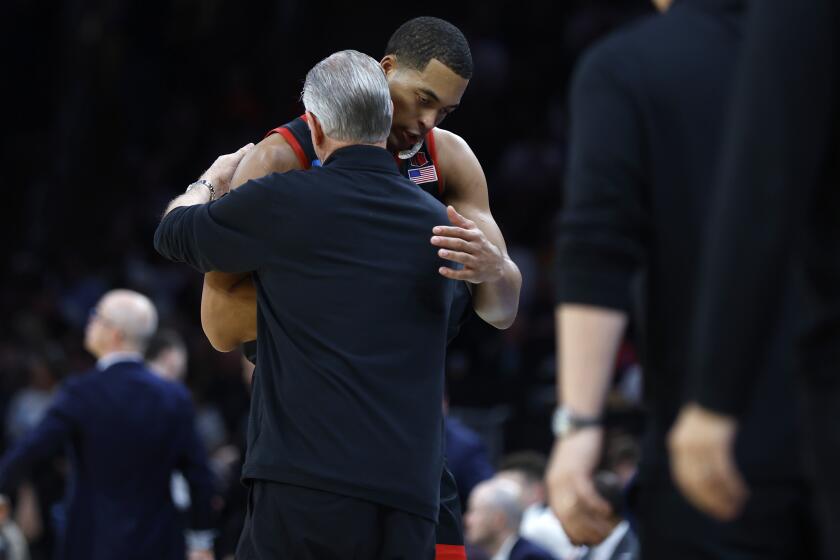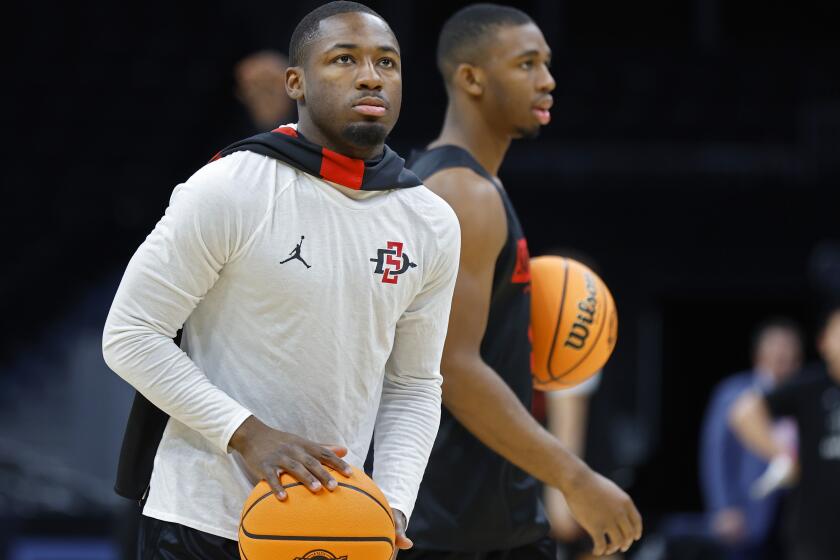Column: ‘Little red engine that could’ defies doubters, helps San Diego land MLS expansion team
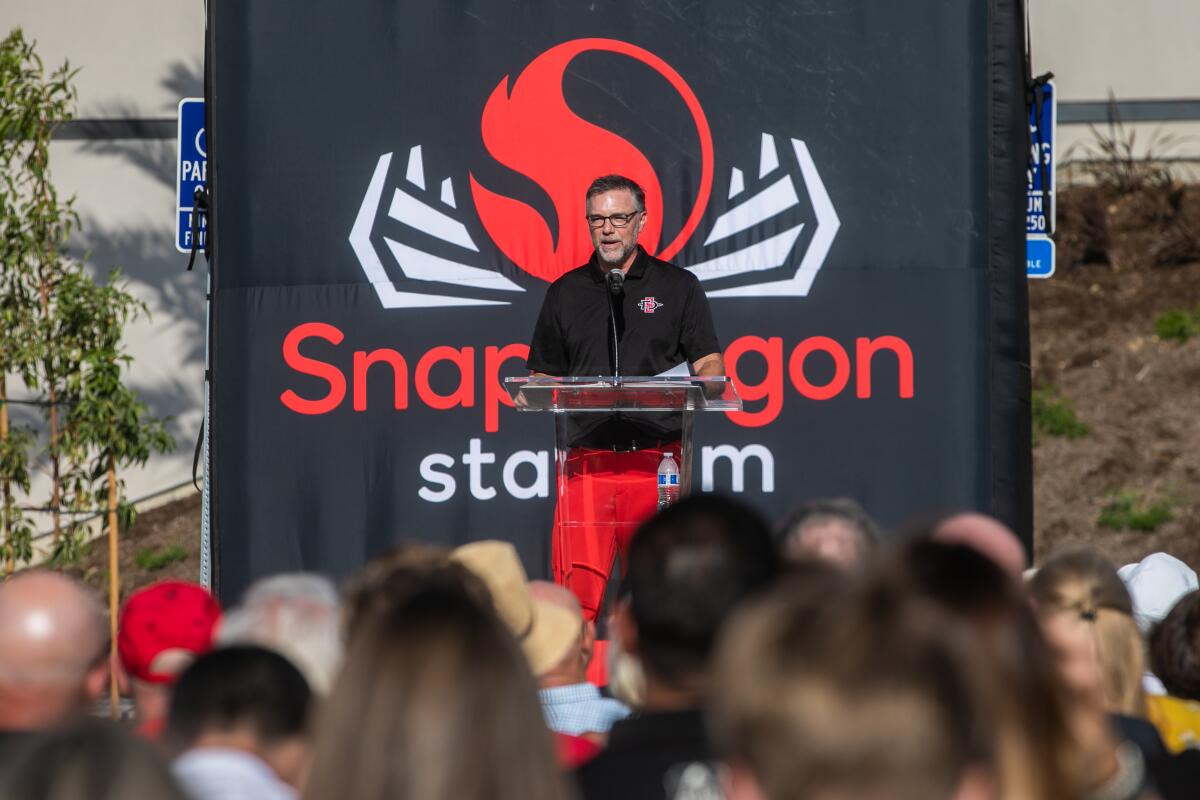
Snapdragon Stadium, Major League Soccer prospects ‘died 1,000 times’ during relentless push to envision more in San Diego
On Dec. 5, 2017, a group that included San Diego State Athletic Director John David Wicker and JMI Sports CEO Erik Judson quietly huddled with Major League Soccer Commissioner Don Garber and others at the soccer league’s headquarters in New York.
The San Diegans began planting seeds to land a hypothetical expansion team, for a stadium to which they had not secured the rights to build, as a contentious ballot-initiative fight with a group seemingly guaranteed to snag a team instead roiled.
Their chances at that precise moment? Somewhere between zip, zero and flat-out zilch.
“I had this conversation with one of the MLS folks when negotiations were going on (later),” Wicker said. “It was one of those low points you always have during a negotiation. This thing has died 100 times and we’ve brought it back to life 100 times.
“If you go back to 2016 (on the stadium project itself), it’s died 1,000 times and we’ve brought it back to life.”
San Diego State, again, has shredded the narrative that you can’t get big things done in sleepy San Diego. There’s not enough visionary thinking, we’re too routinely told. There’s not enough political will. There’s not enough machetes to hack through the entanglements of California’s project-choking regulations.
Safe, not bold. Status quo, not transformation.
Talk, not action.
During a morning news conference Thursday at Snapdragon Stadium, it will be announced that San Diego has secured an MLS franchise to begin play in 2025. It’s been an astounding run of fortitude and sleeve-rolling that has obliterated timid excuse-making and half-measured thinking that causes cities to stagnate.
First, San Diego State’s group wrested control of Mission Valley from rival SoccerCity in a dominant wave of voting support in November 2018. Their stadium came in on time and on budget, nearly unheard of these days in this place.
Two non-starters, people said. Two major and shimmering victories. Can the Pac-12 invitation be far behind?
It might be time to stop betting against the Mesa.
“We were the little red engine that could,” said Judson, who earned a master’s degree at SDSU and leads the sports group for San Diego-based developer JMI. “MLS listened to us, but told us our chances of being successful was sparse at best.”
They heard it closer to home, as well.
Legendary U.S. player and SoccerCity supporter Landon Donovan said in an interview with Soccer Today: “There is zero percent chance (MLS) will come if (San Diego State’s) Measure G passes.”
The MLS carrot in the SoccerCity proposal also was buoyed by support from then-Mayor Kevin Faulconer, City Councilman Scott Sherman and World Cup and Olympic-gold-medal winner Shannon MacMillan.
“Faulconer was against us,” said Jack McGrory, a California State University system trustee in charge of Mission Valley project oversight. “The city attorney sued us twice. They tried to put every roadblock in front of us. They weren’t helpful in any way whatsoever. In fact, they were the opposite.”
Just as those behind Petco Park faced down years of delay and lawsuits before completely reshaping downtown, building Snapdragon Stadium and boldly envisioning MLS in it — despite the doom-and-gloom prospects — underscored the potent cocktail of checking every single box and building broad-based public buy-in.
How many community meetings did Wicker attend?
“I have no idea,” said Wicker, with a laugh. “Hundreds.”
Call it the bird-strike principle. Those behind the SDSU project began meeting with anyone and everyone who might have a possible stake in things. One day, a neighborhood group. The next day, the Sierra Club.
The two-pronged goal: Think of everything and be blindsided by nothing.
“We ran into a problem with bird strikes,” McGrory said. “I didn’t even know what bird strikes were. Some birds try to fly through buildings with clear glass where you can see all the way through. They told us, you’ve got to have opaque windows. Fine, we’ll do it. It was all about building coalitions.
“We agreed to 15 environmental principles that govern the river park alone.”
Asked about bird strikes, Wicker smiled again.
“Our goal was to meet with every environmental group, every community group to explain, ‘This is what SDSU wants to do with the Mission Valley property. What are your thoughts?’” he said. “We truly had an army of people out there, selling our story.”
The list is long, including former SDSU President Sally Roush, onetime Padres Executive Chairman Ron Fowler, Campanile Foundation Chairperson Steve Doyle and on and on. That, though, is central to what made an MLS team possible: Lean on as many people as needed to get the job done.
Judson quipped that Wicker might be the only athletic director in the country who can hold a conversation on bird strikes and hydrology. He juggled everything from stadium steel shipments from Thailand to pinpointing sweet spots in the bond market.
Wicker steered one thing that dominoed into another and another, using a stadium and sports vacuum in America’s eighth-largest city to fuel desperately needed campus expansion.
Another area of expertise for Wicker, with a Pac-12 future looming: He’s excelled at turning “no way” into “someday” with a mix of patience and perseverance.
“In 2017 I think, I started saying a talking point I’ll never forget,” Wicker recalled. “I said we’d open the stadium on Sept. 3, 2022. (Former MLS Deputy Commissioner) Mark Abbott said, ‘We’ve built things in California before. You’ll be successful if you open five to seven years after that date.’
“They were very congratulatory when we put a shovel in the ground. Just keep your head down, work hard, put the right people in place and you can get things done … even in San Diego.”
It’s still nowhere close to easy. San Diego State, though, continues to make it more believable than ever.
Sign up for U-T Sports daily newsletter
The latest Padres, Chargers and Aztecs headlines along with the other top San Diego sports stories every morning.
You may occasionally receive promotional content from the San Diego Union-Tribune.

